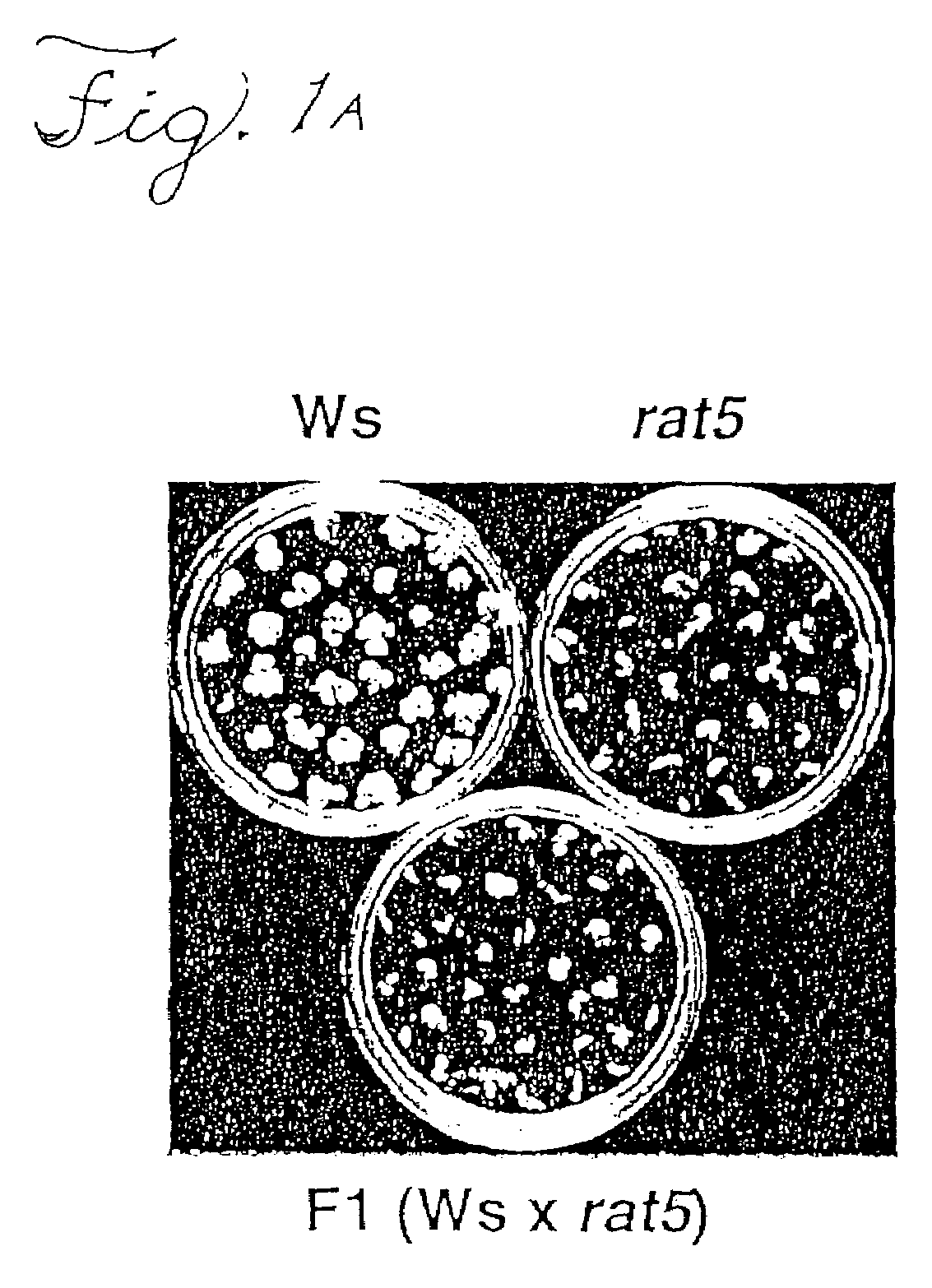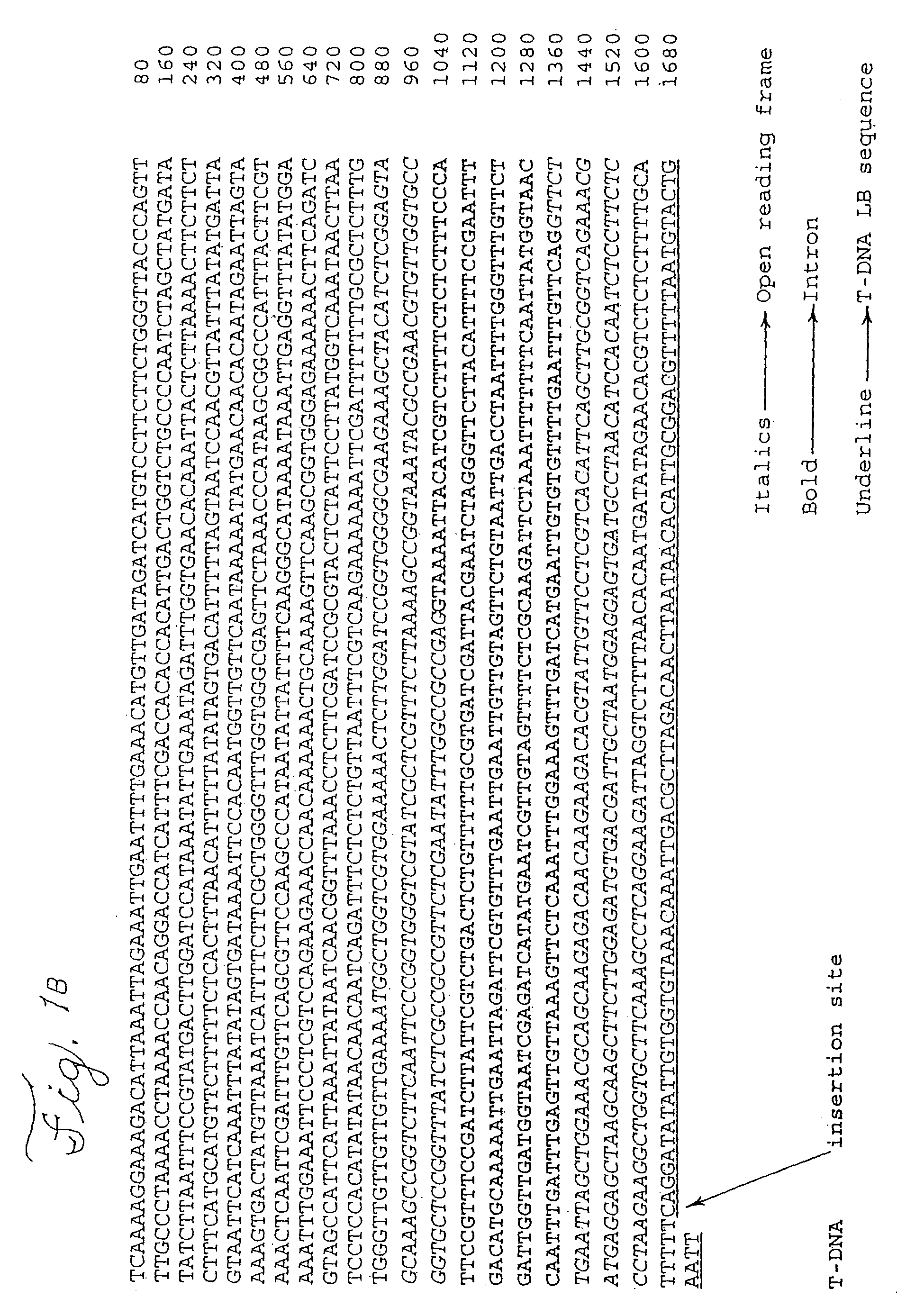Methods and compositions for enhanced plant cell transformation
a technology of plant cells and compositions, applied in biochemistry apparatus and processes, peptide sources, biochemical apparatus and processes, etc., can solve the problems of lack of specialized access, inability to transfer proprietary information from private industry to the public sector, and inability to reproduce the frequency of public maize transformation laboratories. to achieve the effect of increasing the efficiency of plant cell transformation
- Summary
- Abstract
- Description
- Claims
- Application Information
AI Technical Summary
Benefits of technology
Problems solved by technology
Method used
Image
Examples
example 1
Results Indicating the Value of Using the Arabidopsis Histone H2A-1 Gene to Improve Plant Transformation
[0079]Evidence from two independent lines of experimentation shows that the Arabidopsis histone H2A-1 is useful to improve the efficiency of Agrobacterium-mediated plant transformation in dicots and monocots.
[0080]1. Many Arabidopsis ecotypes and mutants cannot be easily transformed by a root transformation method (although they can still be transformed by the flower-dip method). The flower-dip method was used to introduce a histone H2A-1 cDNA, under the control of the CaMV 35S promoter, into a large number of recalcitrant ecotypes and mutants. A number of these transgenic lines were analyzed and evidence emerged that all ecotypes / mutants tested to date can be made competent for root transformation when they over-express the H2A-1 gene. These include mutants in the Agrobacterium attachment process (rat1 and rat3), T-DNA integration (rat17, rat18, rat20, and rat22), a chromatin mut...
example 2
Improved Agrobacterium-Based Transformation of Monocot Plants with an H2A Gene
[0083]Embryos from wild-type maize plants were transformed with Agrobacterium containing a histone H2A gene and an antibiotic resistance gene in the presence of L-cysteine in the cocultivation medium. Transgenic T1 plants (founder lines) were obtained and their seeds (T2) were collected. T2 plants were selected on antibiotic resistance growth medium and based on histone H2A RNA expression data. Embryos from selected T2 plants (T2 embryos) were retransformed with Agrobacterium containing a standard binary vector and a gene of interest in the presence of L-cysteine in the cocultivation medium. An increase in the number of embryos responding indicated an increase in transformation efficiency over transformation using histone alone. Table 2 shows the overall efficiency of transformation [total putatives by event / total responding by event].
[0084]Agrobacterium-mediated transformation results in lower transgene c...
PUM
| Property | Measurement | Unit |
|---|---|---|
| Time | aaaaa | aaaaa |
| Concentration | aaaaa | aaaaa |
| Concentration | aaaaa | aaaaa |
Abstract
Description
Claims
Application Information
 Login to View More
Login to View More - R&D
- Intellectual Property
- Life Sciences
- Materials
- Tech Scout
- Unparalleled Data Quality
- Higher Quality Content
- 60% Fewer Hallucinations
Browse by: Latest US Patents, China's latest patents, Technical Efficacy Thesaurus, Application Domain, Technology Topic, Popular Technical Reports.
© 2025 PatSnap. All rights reserved.Legal|Privacy policy|Modern Slavery Act Transparency Statement|Sitemap|About US| Contact US: help@patsnap.com



